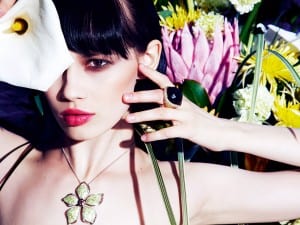One of the most enduring fashion icons of all time, Audrey Hepburn has captivated generations with her unique impish charm, her natural elegance and her gamine pared-down style. There is no-one who doesn’t love to dwell on Audrey’s face and as such she has been photographed by a remarkable array of the 20th century’s leading lights, including Richard Avedon, Cecil Beaton, Angus McBean, Irving Penn, Terry O’Neill and Norman Parkinson.
Even without this artistic pedigree, Portraits of an Icon is destined to be a huge success for the National Portrait Gallery but the five rooms of Hepburn’s images not only allow unfettered admiration for a remarkable beauty, but also show the evolution of her character from war-famine-survivor, through burgeoning model, to internationally famous actress and humanitarian role model.
Organized with the support of the Audrey Hepburn Estate and Hepburn’s sons, Luca Dotti and Sean Hepburn Ferrer, the exhibition also contains rare photographs from their personal collection that provide an insight to the family woman behind this very public figure.
Arranged chronologically, the exhibition charts Hepburn’s progress from her early years as a dancer, chorus girl and model in the Netherlands and London, to her early film success, on through international fame in the 1950s and 1960s and to her later film renaissance and work with UNICEF in the last five years of her life. Throughout, her image changes with the assignments and photographers but it remains uniquely her own and accompanying texts show that the pursuit to understand the elusive Hepburn mystique is nothing new.
A Mark Shaw photostory for Life in 1953 explores Hepburn as “a many-sided charmer” and seeks to get to the bottom of the “typical Hepburn gestures” that won millions of fans and a Best Actress Academy Award for her first major film role. Antony Beauchamp’s 1955 black and white images show Hepburn’s beauty in its greatest simplicity while Bob Willoughby’s 1958 image of Hepburn and husband Mel Ferrer working together on Green Mansions is a candid insight into Hepburn’s vulnerability and devotion as a wife.
The final room explores Hepburn’s lasting media image with a display of magazine covers from throughout her career and cements her status. Accompanying these are publicity shots from her later films and images of her charity work across the developing world. It seems a shame that this side of Hepburn’s life is left under-explored but as far as blockbusting shows go, this NPG effort can’t go wrong.
Although Hepburn’s enduring legacy is as the pinnacle of sophistication, the charity work of her final years is continued today through the Audrey Hepburn Children’s Fund and is a testament to the character behind the icon, and the fascinating story behind this young girl who survived famine in the war and always sought to better the world from there on.
In 1954 Cecil Beaton summarised Hepburn’s appeal as a modern woman in saying she “took the rubble of Belgium, an English accent and an American success to launch the striking personality that best exemplifies our new zeitgeist.” Throughout all the images she maintains a glamour that seems simultaneously achievable (such simple clothes, such consistency through the decades) and other-worldly (she really does have a face like no-one else). It is a fascinating insight into the making, and continued endurance of a truly unique icon.
Ruby Beesley
Audrey Hepburn: Portraits of an Icon, until 18 October, National Portrait Gallery, St Martin’s Place, WC2H 0HE. For more information visit www.npg.org.uk
Follow us on Twitter @AestheticaMag for the latest news in contemporary art and culture.
Credits
1. Audrey Hepburn photographed wearing Givenchy by Norman Parkinson, 1955. Courtesy of National Portrait Gallery





